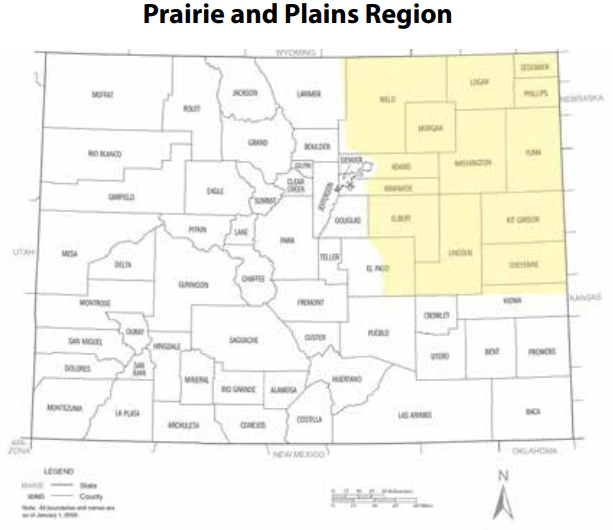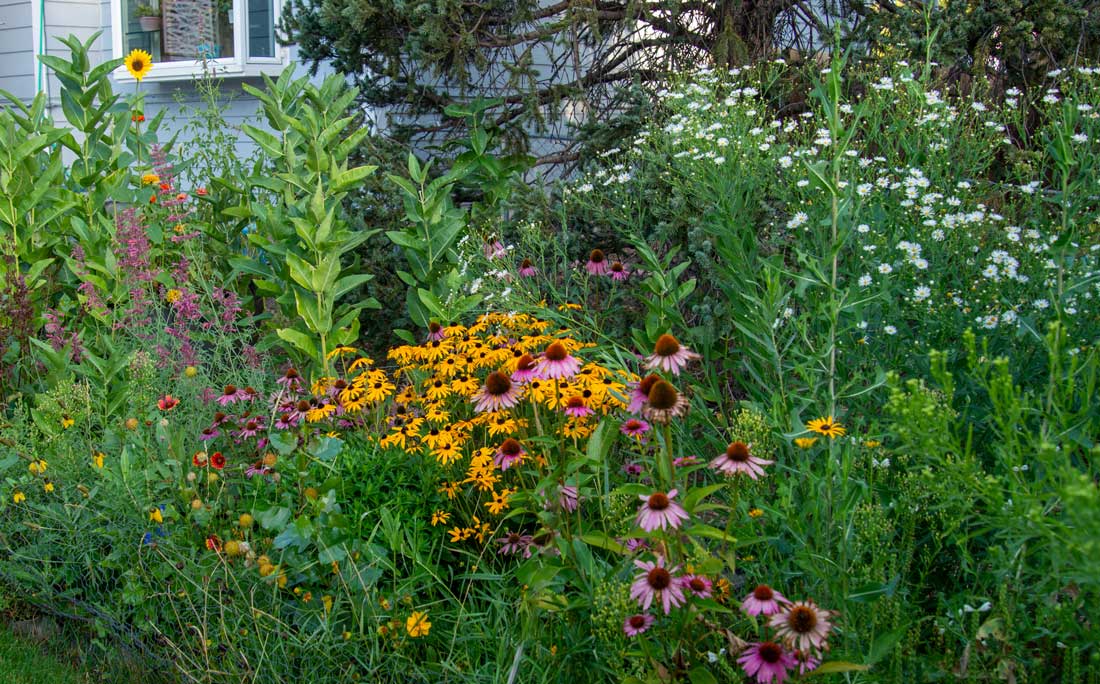New to Natives?
Read all about Colorado’s wonderful native plants in this section.
All About Native Plants.
If you’re new to the world of native plants and not quite sure where to start, we’ve got you covered. On this page you will find some important things to know about native plants:
- Where to buy them
- How to use them in your yard
- Where to see them in the wild.
What are native plants?
Native plants are plants that have co-evolved with the other plants and all of the other living creatures in a specific area. Colorado’s native plants have learned to thrive in our state’s harsh conditions, to support a healthy, functioning ecosystem, and to keep the checks and balances on growth that allow for wide biodiversity.
Why are native plants important?
Native plants in Colorado provide a lifeline to our wildlife. Birds, fish, mammals, and pollinators all have specific needs that our native plants provide. Our native plants produce or sustain the right kind of food at the right time for the animals that live in or migrate through Colorado, so it’s important that we help protect their habitats and plant them when we can.
What are the native plants in my area?
Certain native plants live in certain areas. Check the maps below to see which region you live in, and click on the map of your region to see a Native Plant guide for native plants near you.





Can I plant native plants in my yard?
Yes! Adding native plants to your home landscape is a great idea. By bringing in plants adapted to our area, your garden will have reduced needs for maintenance, fertilizer, watering, and pesticide use. And perhaps even more importantly, your garden will be attracting the native birds and butterflies everyone loves to watch, and it will also be supporting the larger natural ecosystem you live in. A few things to keep in mind:
HOA restrictions: It’s always a good idea to check with your HOA rules before investing in landscape changes. However, in 2023 House Bill 178 was passed, this new law gives homeowners the right to use xeriscape plants in their yards. Xeriscape plants are plants that need little or no irrigation. Most of our Colorado native plants fit this xeriscape requirement.
Cost: Native plants can be more expensive than non-native plants. This is because they are not as widely available, and there is a higher demand for them. Look for less expensive options, some natives are less expensive than others, and often a little research will help you find plants that fit your budget.
Sourcing: It can be a challenge to find native plants. Get connected with local organizations (like ours!) that are focused on environmental, conservation, or pollinator topics. These often promote sales and swaps of native plants. You can also order native plants online. If you have the space, you can grow your own native plants from seed.

Which native plants should I use?
From grasses to flowers to trees, there are a lot of options for native plants in your home landscape. Plants that attract pollinators are always a beneficial choice, and the Low Water Native Plants for Pollinators guide is a useful resource for choosing the perfect plants for your yard.
Where can I buy native plants?
This downloadable PDF of Native Plant Vendors lists nurseries and other places that sell all or mainly native plants or seeds. Colorado Native Plant Society also sponsors a big sale each spring.
Where can I see native plants out in nature?
There are many opportunities to see natives when you’re out hiking. Its fun and rewarding to be on the lookout for native plants. Here are some tips:
Bring a field guide or app with you so you can identify plants.
Be careful not to disturb the plants or their habitats.
Take pictures of the plants you find so you can learn more about them later.
Take time to learn about the native plants in your area, you will enjoy them more and you will also be able to help protect them and ensure that they continue to thrive.
Follow Leave No Trace principles when you’re enjoying native plants in their natural habitat. Be respectful of the plants, don’t pick them, and stay on the trail to avoid trampling.
How can I learn more about native plants?
The Colorado Native Plant Society has a great plant database available online. Our magazine, Aquilegia, is also an excellent resource for native plant information, places to visit, and photographs.
We might be biased, but we think becoming a member of the Colorado Native Plant Society is the best way to learn more and meet other people interested in native plants. Look at the event calendar or llistings, and come out to an event, we would love to see you there!
by Felicia Brower
Media Committee
Member: Metro-Denver Chapter
Colorado Native Plant Society
